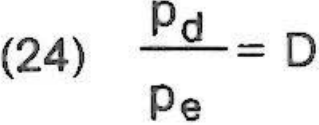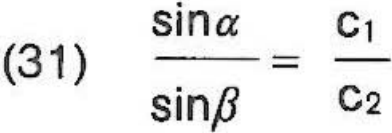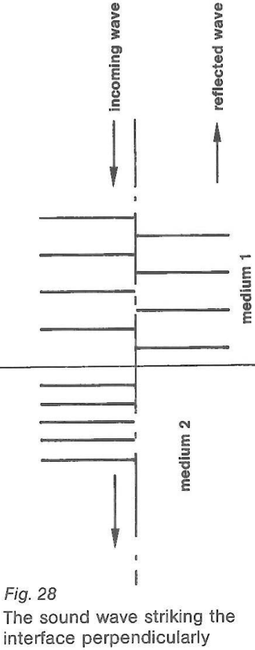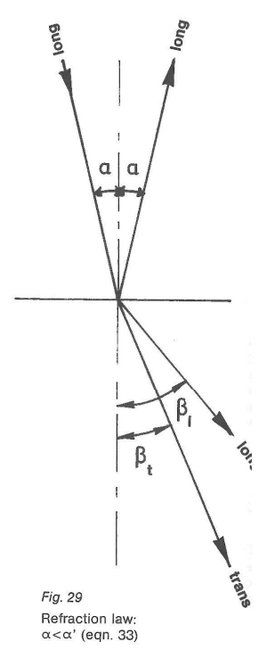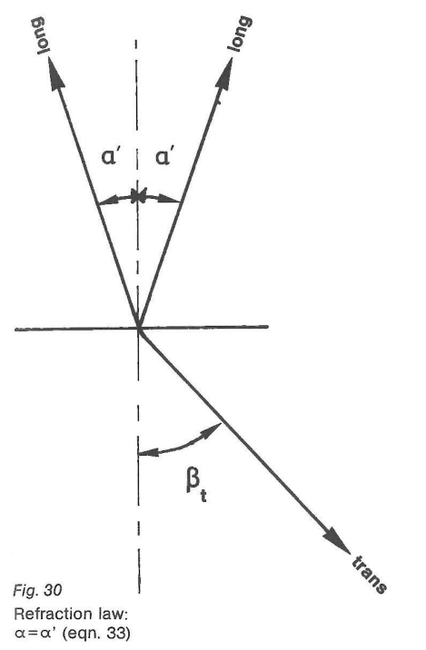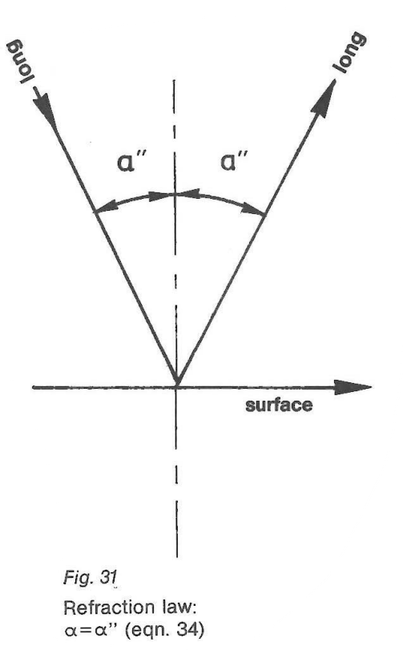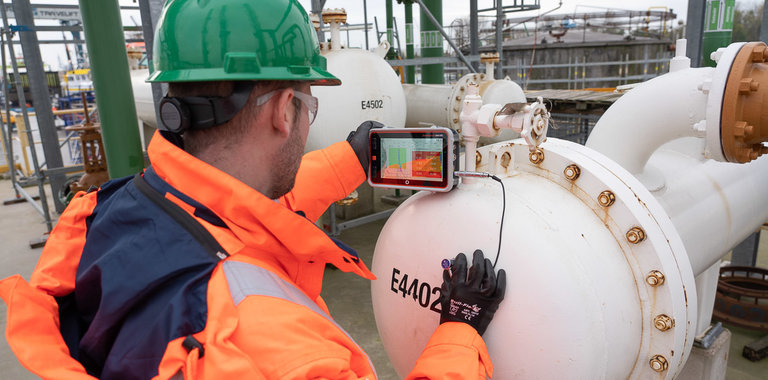
How do sound waves react to interfaces?
In this article:
- Sound Waves Split at Material Interfaces: When a sound wave encounters an interface between two materials with different acoustic impedances, part of the wave is reflected and part is transmitted, governed by reflection and transmission coefficients.
- Acoustic Impedance Mismatch Determines Reflection Strength: The greater the difference in acoustic impedance between two media, the stronger the reflection and the weaker the transmitted wave—critical for ultrasonic flaw detection.
- Refraction Alters Wave Direction and Type: At non-perpendicular angles, sound waves refract according to Snell’s Law, changing direction and potentially converting between longitudinal and transverse wave modes.
- Critical Angles Define Wave Behavior Limits: Beyond certain incidence angles, longitudinal waves may no longer propagate in the second medium, leading to mode conversion or the generation of surface waves.
- Amplitude and Phase Are Affected by Interface Orientation: The reflected wave may experience a phase shift, and only a portion of the incident wave’s energy is captured, influencing signal interpretation in ultrasonic testing.
For sound propagation limits exist where two media with different elastic properties join. If a sound wave with a plane wave front strikes an Interface between two otherwise infinite media, lt is partially reflected es a plane wave and part passes through the Interface (fig. 28). The ratio between the sound pressure of the reflected wave pr and the pressure of the incoming wave pe is the reflection factor R:
The ratio of the passing wave pd to the incident wave pe is the through-transmission factor D
Decisive for the magnitude of R and D are the acoustic impedances Z, = p, c, and Z, = p2c2 of both media, equations (25) and ( 26).
(A survey is given in table 1).
Between equations ( 25) and ( 26) there is the relationship ( 27)
The pressure which passes through the interface and the reflected pressure amplitude by no means add up to 1 i. e. their sum is not the pressure of the incident wave. This relationship only applies to the energy.
If the arrangement of the Interfaces is reversed, which is forcibly the case with the echo method, one obtains ( 25'):
The amount of the reflected amplitude remains the same — only the phase is reversed.
As the factors Rand D or R' and D' represent ratios they can also be given as dB-values. This should be represented by the example of the sound transfer from steel into water:
The magnitude of the reflected amplitude is thus only 0.6 dB lower than that of the incident amplitude (almost ideal reflection).
The wave which passes from steel into water has a sound pressure which is approx. 24 dB below the sound pressure of the incident wave. If the sound wave strikes the interface at an angle then the reflected waves and the waves which pass through the Interface are more complicated to calculate. But another important effect with inclined impingement must be dealt with: the refraction when passing through the interface changes the direction of propagation of the sound wave according to Snell's refraction law (fig. 29)
In solid bodies there are also wave mode conversions when the waves are refracted at interfaces. An incident longitudinal wave in Fig. 29 generates, in medium 2, a refracted longitudinal wave and also a refracted transverse wave. Here the refraction law (32) applies:
If sin ß long = 1 then the limiting angle is (fig. 30) equation (33)
For refraction angle a> a there is no longer any longitudinal wave in medium 2, there are only transverse waves. If sin f trans = 1 then there is a second limiting angle a" (fig. 31) equation (34).
For a refraction angle greater than a" there is neither a longitudinal nor a transverse wave in medium 2, there are surface waves and they only exist at the Interface. With the refraction law only the direction of propagation of the refracted wave can be calculated but not however its amplitude. Apart from that the refraction law does not make it clear that transverse waves are always linear polarised atter having been reflected or refracted. With testing practice there is a further complication that unlimitingly plane wave fronts never exist: the sound beam is limited and the wave fronts are not plane. Nevertheless the reflection at interfaces is the most important phenomenon in the ultrasonic testing of materials. With angle beam probes (fig. 11) one uses the refraction with a refraction angle greater than a' in order to generate only one linear polarized transerse wave in the material. The behaviour of the reflected wave in the vicinity of the limiting angles can be taken advantage of in order to evaluate the elastic properties in the material (critical angle reflectivity).


